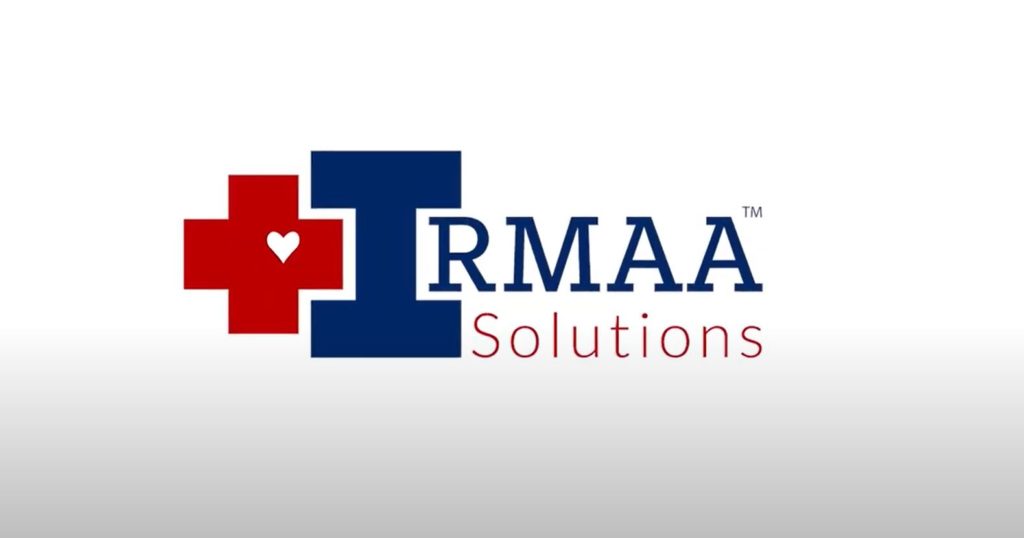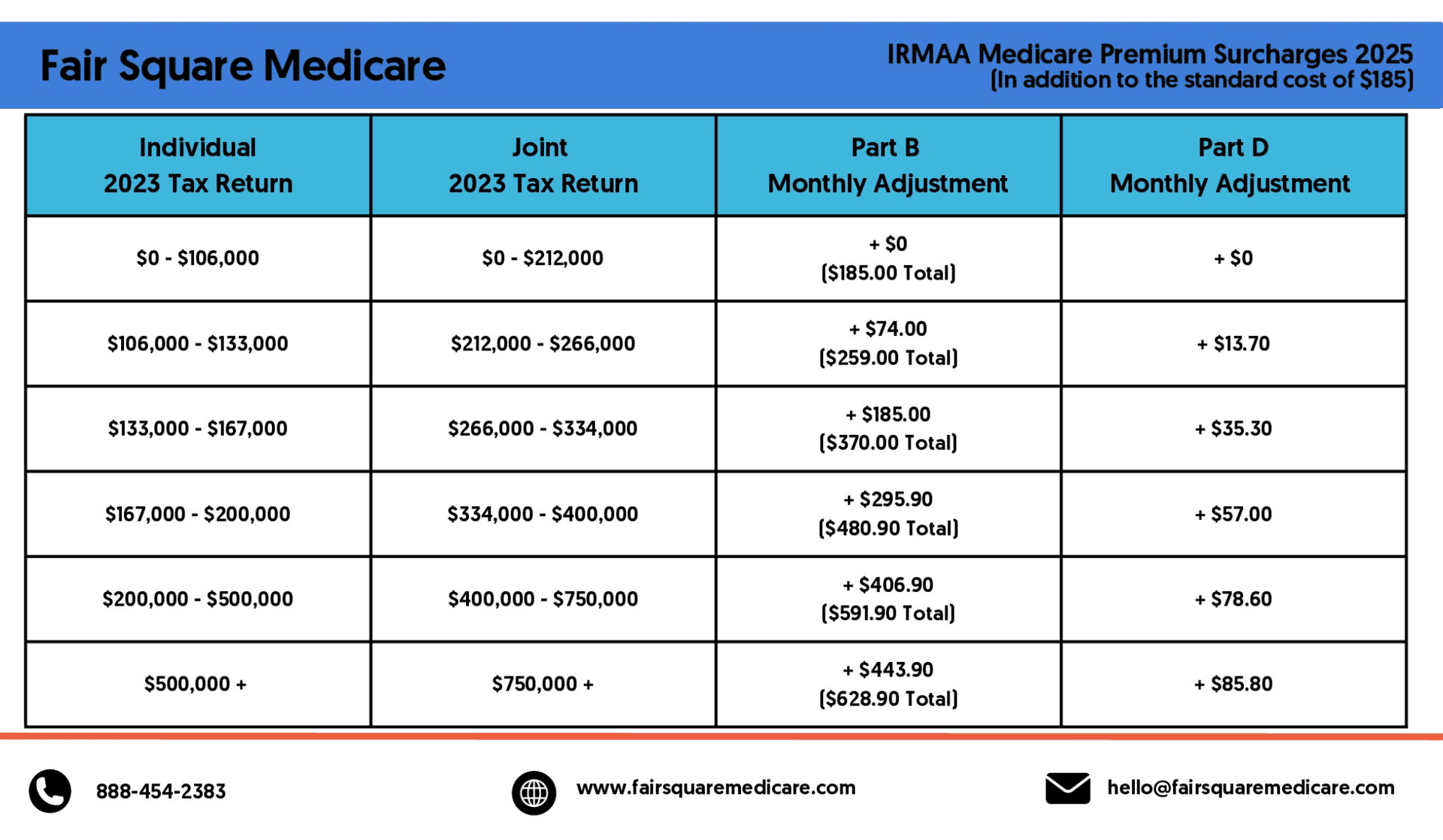Everything You Required to Know Concerning the IRMAA Brackets and the Appeal Opportunities
The Income-Related Monthly Adjustment Amount (IRMAA) can considerably affect Medicare costs for people and pairs with greater incomes. Comprehending the IRMAA brackets is critical for recipients that might not understand exactly how their modified adjusted gross earnings affects expenses. In addition, there are avenues for appealing IRMAA determinations, particularly in cases of earnings adjustments. Checking out the subtleties of IRMAA can reveal crucial techniques that might assist take care of these expenses efficiently.
Comprehending IRMAA: What It Is and How It Works
Although several people might not know it, the Income-Related Monthly Adjustment Amount (IRMAA) plays a substantial duty in identifying Medicare premiums for higher-income beneficiaries. Specifically, IRMAA is an additional fee that influences those with modified adjusted gross earnings above particular thresholds. This modification guarantees that individuals who make more contribute a larger share in the direction of their Medicare coverage.
The Social Safety and security Management computes IRMAA based on income tax return information from 2 years prior, which suggests current premium changes might reflect previous revenue levels. Recipients are notified of their IRMAA standing with a letter, detailing any kind of extra costs quantities owed. Understanding IRMAA is vital for recipients, as it straight affects their month-to-month healthcare expenses. This knowledge outfits them to make educated choices regarding their economic preparation pertaining to Medicare, guaranteeing they are gotten ready for prospective costs raises based on earnings adjustments.
The IRMAA Brackets Explained
The IRMAA braces categorize beneficiaries based on their changed adjusted gross earnings, identifying the extra costs amounts they need to spend for Medicare protection (security brackets). These braces are structured into rates, with each tier matching to details earnings arrays. As a recipient's earnings rises, so does their IRMAA additional charge, which can considerably impact their general health care costs
As an example, individuals with earnings below a particular threshold face no extra costs, while those in higher brackets may come across surcharges that raise incrementally. This dynamic framework intends to line up premium contributions with recipients' economic abilities, guaranteeing that those with higher means add more towards their medical care.
The IRMAA brackets are evaluated every year, showing modifications in earnings levels and modifications for inflation. Understanding these braces is vital for beneficiaries to prepare for possible prices and prepare their healthcare budget plans efficiently, eventually helping in financial decision-making pertaining to Medicare protection.
Aspects That Impact Your IRMAA Premium Adjustments
Several variables can influence adjustments to an individual's IRMAA premium, which are largely based on their customized adjusted gross earnings. This earnings consists of earnings, returns, resources gains, interest, and various other gross income resources. Changes in earnings can develop from various circumstances, such as retirement, work loss, or inheritance, which might result in a reassessment of IRMAA costs.
Furthermore, tax filing standing plays a substantial duty. Individuals submitting jointly might have various premium effects than those submitting individually. Other variables, such as life occasions like marital relationship or separation, can also influence income levels and, as a result, IRMAA adjustments.
Moreover, the Social Safety and security Administration evaluates income from 2 years before determine existing premiums, highlighting the importance of regular financial surveillance. Recognizing these aspects is crucial for individuals as they navigate possible adjustments in their healthcare costs related to Medicare.
How to Identify Your IRMAA Status
Determining one's IRMAA standing needs an understanding of numerous vital elements, including earnings limits, filing condition, and previous year revenue. Each of these components can dramatically affect the estimation of Medicare costs. By analyzing these parts, individuals can better analyze their possible IRMAA commitments.
Revenue Thresholds Review
Understanding revenue limits is important for people navigating the intricacies of IRMAA (Earnings Connected Monthly Adjustment Amount) These limits determine the additional amounts individuals spend for Medicare Component B and Component D based on their modified adjusted gross income (MAGI) The limits can change each year, so it is necessary to remain upgraded. For 2023, individuals with a MAGI above $97,000 and pairs filing jointly above $194,000 may encounter raised costs. The thresholds are fractional right into brackets, with greater earnings degrees leading to gradually higher changes. By properly examining their MAGI, people can ascertain their IRMAA standing and prepare for potential costs boosts. Comprehending these income restrictions is crucial for effective economic preparation pertaining to Medicare benefits.
Filing Condition Influence
While evaluating IRMAA condition, a person's declaring condition plays a substantial duty in establishing premium changes for Medicare. The Irs recognizes a number of filing statuses, consisting of single, married filing jointly, wedded filing individually, and head of house. Each status has distinctive income limits that affect the IRMAA braces. As an example, couples filing collectively have a higher consolidated revenue restriction contrasted to solitary filers, which might impact their IRMAA responsibilities. Conversely, those submitting individually encounter lower limits, potentially resulting in greater costs. Understanding exactly visit this site right here how filing status connects with income degrees is essential for beneficiaries to properly evaluate their IRMAA implications and financial obligations pertaining to Medicare costs. This recognition can assist in economic preparation and possible charms.
Previous Year Income
To assess IRMAA condition efficiently, individuals must consider their modified adjusted gross earnings (MAGI) from the previous tax year. This figure is instrumental in identifying the IRMAA brackets, which determine the added premiums for Medicare. The Social Safety Administration determines MAGI by taking the adjusted gross income and including specific reductions, such as tax-exempt interest. People need to examine their tax obligation returns carefully to identify any variations in earnings that can impact their IRMAA classification. Appealing the IRMAA decision is possible by submitting paperwork showing the revenue adjustment if one's earnings considerably goes down in the existing year due to life modifications. Understanding just how previous year revenue affects IRMAA condition is crucial for taking care of Medicare prices effectively.
Actions to Appeal Your IRMAA Determination
People might locate themselves needing to appeal their IRMAA decision because of modifications in income or various other qualifying situations. Recognizing eligibility for appeal is important, as is familiarizing oneself with the appeal submission procedure. These actions can aid make certain that people support effectively for a reconsideration of their IRMAA condition.
Qualification for Appeal

Appealing an IRMAA resolution can be a vital action for those who think their earnings has actually been wrongly examined. To be eligible for an appeal, individuals must develop that their reported earnings does not mirror their current monetary circumstance. This could include scenarios basics such as a substantial decline in revenue, life-altering events like divorce, or the passing away of a spouse. It is important for individuals to collect pertinent documents that substantiates their insurance claims, as this details will play a crucial duty in the charm process. Additionally, people have to submit their appeals within certain time frames laid out by the Social Safety Management to guarantee factor to consider. Comprehending these eligibility requirements is crucial for a successful appeal result.
Appeal Submission Process
Navigating the appeal entry process for an IRMAA decision needs cautious interest to detail and adherence to specific actions. People need to finish the proper appeal form provided by the Social Security Administration (SSA) or its internet site. Next, it is vital to gather all pertinent documentation that supports the charm, such as financial statements or evidence of life changes affecting income. The finished type and sustaining files should then be sent to the SSA within the assigned timeframe, typically within 60 days of the decision. After entry, applicants should check their appeal standing and be prepared to reply to any kind of more questions from the SSA. Recognizing these steps ensures an extra effective appeal process.
Common Reasons for IRMAA Appeals
While many people might find themselves encountering an enhanced Medicare costs due to the Income-Related Monthly Adjustment Amount (IRMAA), there are several common grounds for appealing these resolutions - appealing irmaa. One main reason for allure is a significant reduction in income, which may occur due to retirement, job loss, or clinical expenses. Individuals might also appeal if their revenue was momentarily elevated as a result of an one-time occasion, such as the sale of a building or a large inheritance
An additional common reason is discrepancies in documented income, where people can give paperwork to sustain their insurance claims. Furthermore, individuals may appeal on the basis of adjustments in marriage standing, which can affect noted earnings levels. Recognizing these usual grounds can help individuals navigate the allure procedure properly and potentially reduce their Medicare costs. Each situation is special, but these factors frequently work as a foundation for tough IRMAA resolutions.
Tips for Managing Your Medicare Expenses With IRMAA
Handling Medicare prices can be difficult, particularly for individuals affected by the Income-Related Monthly Adjustment Amount (IRMAA) To successfully handle these expenses, individuals should first analyze their existing earnings and prospective adjustments, such as retired life or minimized functioning hours, that might lower their IRMAA bracket.

Furthermore, people might take advantage of consulting a monetary expert or Medicare specialist who can supply customized approaches for minimizing total healthcare costs.
Ultimately, remaining informed regarding adjustments in Medicare plans and tax legislations will empower beneficiaries to make positive choices. By taking these steps, people can navigate the intricacies of IRMAA and enhance their Medicare expenditures effectively.
Regularly Asked Inquiries
Exactly How Typically Are IRMAA Brackets Adjusted or Updated?
IRMAA brackets are usually readjusted annually, reflecting adjustments in earnings limits based on rising cost of living and other economic elements. This ensures that the braces stay relevant to current income levels and Medicare funding demands.
Can IRMAA Influence My Qualification for Other Medicare Programs?
IRMAA can affect eligibility for sure Medicare programs. Greater earnings changes may lead to increased premiums, possibly affecting enrollment choices and financial help choices for recipients seeking added insurance coverage or supplementary plans within Medicare.

What Takes place if I Miss the Appeal Target Date?
Missing out on the charm deadline causes the being rejected of the appeal request. Individuals might have to accept the original IRMAA determination, potentially leading to higher premiums without option to dispute the decision.
Exist Any Type Of Exemptions for Low-Income People Concerning IRMAA?
There are no specific exemptions for low-income people relating to IRMAA. Individuals might certify for a reduction if they can demonstrate a significant reduction in earnings due to situations like task loss or other economic challenges.

Just how Does My Earnings From Investments Impact My IRMAA Computation?
Investment earnings contributes to the total customized adjusted gross earnings (MAGI) utilized in the IRMAA estimation. Higher investment income can lead to click for more increased IRMAA repayments, influencing the overall price of Medicare costs for individuals.
Figuring out one's IRMAA status needs an understanding of several key factors, including earnings thresholds, submitting status, and previous year revenue. Comprehending revenue limits is critical for people navigating the complexities of IRMAA (Revenue Associated Monthly Adjustment Amount) If one's income considerably drops in the existing year due to life adjustments, appealing the IRMAA decision is possible by sending documents demonstrating the earnings modification. Individuals might find themselves needing to appeal their IRMAA decision due to modifications in earnings or various other certifying conditions. Financial investment income adds to the complete modified adjusted gross income (MAGI) used in the IRMAA computation.